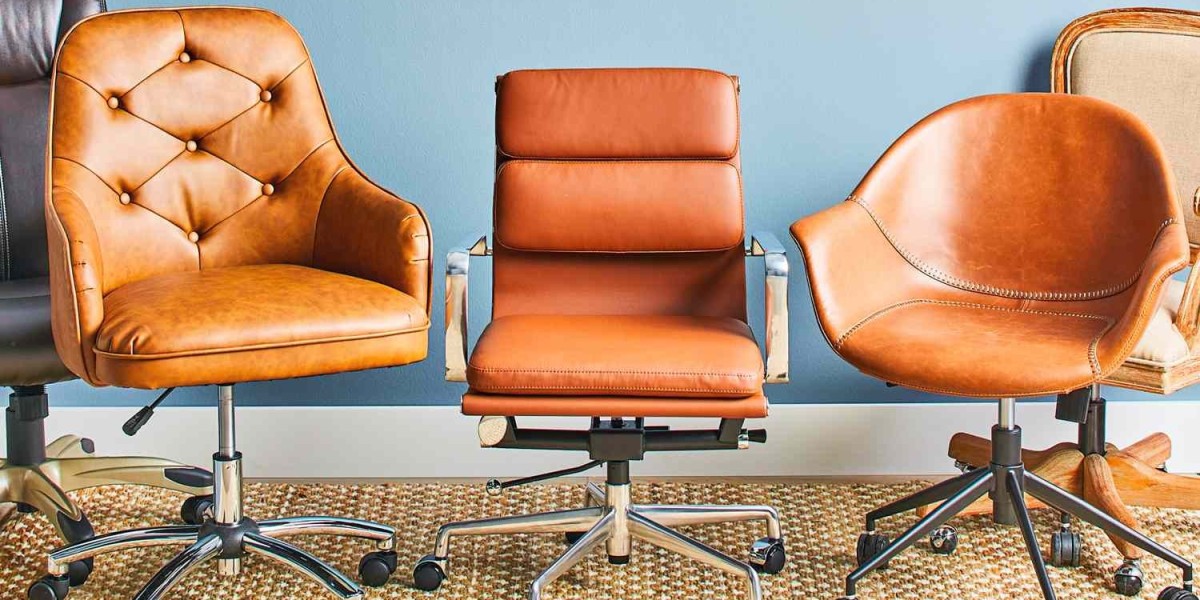As the landscape of work continues to evolve, office furniture design is keeping pace with innovations aimed at enhancing productivity, comfort, and flexibility. The rise of hybrid work models, the increasing emphasis on employee well-being, and sustainability concerns are reshaping the future of office furniture. Companies are seeking solutions that not only foster productivity but also reflect modern work culture and technological advancements. Here are the key trends shaping the future of office furniture design:
1. Flexible and Modular Furniture
A. Adaptability for Hybrid Work
- Description: With the rise of hybrid and remote work models, furniture that can adapt to different workstyles and environments is becoming essential. Modular furniture, such as configurable desks, chairs, and partitions, offers the flexibility to accommodate a variety of setups.
- Benefits:
- Versatility: Modular pieces can be rearranged, expanded, or reduced, allowing for seamless transitions between individual work, team collaboration, and remote work setups.
- Cost-Efficiency: Companies can invest in furniture that adapts to changing needs, reducing the need for constant replacements.
B. Multi-Functional Furniture
- Description: Multi-functional furniture is designed to serve more than one purpose. For example, a desk with built-in storage or a lounge chair that doubles as a workspace.
- Benefits:
- Space Optimization: Multi-functional furniture is ideal for compact offices or home workspaces, maximizing utility while maintaining a minimalist footprint.
- Employee Convenience: Having furniture that serves multiple functions supports a more streamlined, efficient work environment.
2. Ergonomic Design for Health and Comfort
A. Focus on Well-Being
- Description: Ergonomically designed office furniture prioritizes employee health and comfort. Adjustable chairs, sit-stand desks, and footrests are designed to improve posture, reduce strain, and promote movement throughout the day.
- Benefits:
- Improved Health: Ergonomic furniture reduces the risk of musculoskeletal issues, such as back pain or repetitive strain injuries, enhancing overall employee well-being.
- Increased Productivity: Comfortable, supportive furniture helps employees focus better, leading to greater productivity and fewer distractions caused by discomfort.
B. Personalized Adjustability
- Description: As workplaces prioritize inclusivity, office furniture is increasingly being designed with adjustability in mind, allowing employees to customize chairs, desks, and other furniture to their specific needs.
- Benefits:
- Enhanced Comfort: Adjustable features ensure that employees can tailor their workspace to fit their individual body types and work preferences.
- Inclusivity: Personalized furniture accommodates a diverse workforce, ensuring that everyone can work comfortably, regardless of their physical needs.
3. Sustainable and Eco-Friendly Materials
A. Recycled and Renewable Materials
- Description: As sustainability becomes a priority for businesses, office furniture manufacturers are turning to eco-friendly materials such as recycled plastics, reclaimed wood, and sustainable bamboo. These materials minimize environmental impact while maintaining durability and style.
- Benefits:
- Reduced Carbon Footprint: By using recycled and renewable materials, companies can significantly reduce their environmental footprint, aligning with sustainability goals.
- Eco-Conscious Branding: Investing in eco-friendly office furniture helps companies communicate their commitment to sustainability, which can be a key element of their brand identity.
B. Cradle-to-Cradle Design
- Description: The cradle-to-cradle approach ensures that furniture is designed with its full lifecycle in mind, from the initial sourcing of materials to end-of-life recycling. This trend emphasizes reducing waste and creating circular economies within the furniture industry.
- Benefits:
- Long-Term Sustainability: Furniture that is designed to be recycled or repurposed at the end of its life reduces waste and supports a more sustainable office ecosystem.
- Cost Savings: Durable, sustainable furniture often requires fewer replacements, leading to long-term cost savings for businesses.
4. Smart Office Furniture
A. Technology Integration
- Description: Smart furniture incorporates technology to enhance the work experience. Desks with built-in wireless charging, chairs with posture monitoring, and smart lighting that adjusts based on natural light are becoming more prevalent in the modern office.
- Benefits:
- Improved Productivity: Smart furniture streamlines daily tasks, making it easier for employees to stay connected, charged, and focused throughout the day.
- Health Monitoring: Furniture with built-in sensors can track posture, movement, and sitting time, helping employees maintain healthier work habits.
B. IoT-Enabled Workstations
- Description: The Internet of Things (IoT) is being integrated into office furniture to create connected workstations that can monitor usage, adjust lighting or temperature, and track employee preferences.
- Benefits:
- Customizable Workspaces: IoT-enabled furniture can be programmed to remember an employee’s preferences for seating, desk height, and lighting, providing a personalized experience.
- Data-Driven Decisions: Employers can use data collected from smart furniture to optimize space usage and improve office layout for greater efficiency.
5. Collaborative and Social Spaces
A. Furniture for Collaborative Work
- Description: As offices shift towards more open and collaborative spaces, furniture is being designed to foster teamwork. Collaborative desks, standing tables, and modular seating arrangements encourage interaction and idea-sharing.
- Benefits:
- Enhanced Collaboration: Flexible, movable furniture allows teams to gather quickly and work together efficiently, boosting innovation and creativity.
- Dynamic Work Environment: These designs support the fluid nature of modern work, where employees may need to move between individual tasks and team projects.
B. Relaxation and Social Areas
- Description: Lounge areas and informal seating are becoming more prominent in offices, providing spaces for employees to relax, socialize, or have informal meetings. Furniture like soft couches, bean bags, and communal tables support these zones.
- Benefits:
- Work-Life Balance: Comfortable, casual furniture in social areas encourages employees to take breaks, improving overall well-being and preventing burnout.
- Informal Collaboration: Relaxation spaces also serve as informal meeting spots, where employees can collaborate in a more laid-back setting.
6. Minimalist and Aesthetic Design
A. Clean, Simple Lines
- Description: Minimalist furniture with sleek, clean lines and simple designs is gaining popularity as it helps create a clutter-free, calming environment. This trend emphasizes functionality without sacrificing style.
- Benefits:
- Focus on Essentials: Minimalist designs remove distractions, creating a streamlined workspace that encourages focus and productivity.
- Modern Appeal: Clean, modern furniture enhances the aesthetic appeal of the office, making it look professional and up-to-date.
B. Neutral and Natural Color Palettes
- Description: Neutral and earthy color schemes dominate modern office furniture, with shades of beige, gray, and soft greens contributing to a peaceful and inviting atmosphere.
- Benefits:
- Calming Effect: Natural colors help reduce stress and create a more welcoming environment, contributing to employee well-being.
- Timeless Design: Neutral palettes offer timeless appeal, ensuring that office furniture remains stylish for years to come.
7. Home-Like Comfort in the Office
A. Resimercial Design
- Description: "Resimercial" design, which blends residential and commercial aesthetics, is becoming increasingly popular. This trend brings the comfort of home into the office through cozy furniture, soft fabrics, and warm lighting.
- Benefits:
- Increased Comfort: Resimercial furniture creates a homelike environment, helping employees feel more relaxed and comfortable at work.
- Improved Productivity: A comfortable, inviting space encourages employees to stay focused and productive throughout the day.
B. Flexible Lounge Spaces
- Description: Offices are incorporating lounge areas with sofas, armchairs, and coffee tables, creating informal workspaces where employees can work away from their desks.
- Benefits:
- Encourages Movement: Flexible lounge spaces allow employees to change their environment throughout the day, preventing stagnation and promoting creativity.
- Enhanced Comfort: These spaces offer a relaxed alternative to traditional workstations, fostering a more dynamic and enjoyable work experience.
Conclusion
The future of office furniture design is centered on flexibility, well-being, sustainability, and technology. As workspaces continue to evolve with hybrid work models, the demand for adaptable, ergonomic, and eco-friendly furniture will only increase. Offices of the future will prioritize both employee comfort and productivity, with designs that seamlessly blend style, functionality, and sustainability to create spaces that inspire innovation and collaboration. By staying ahead of these trends, businesses can create work environments that meet the needs of modern employees while fostering a sense of well-being and creativity.
reddestin.pk



